Notice the writing in the groove. I haven't done anything about rust on this yet and I hesitate to. But out in the Southern California sunshine I could start to make out what looks like the beginnings of roman numerals on both sides.

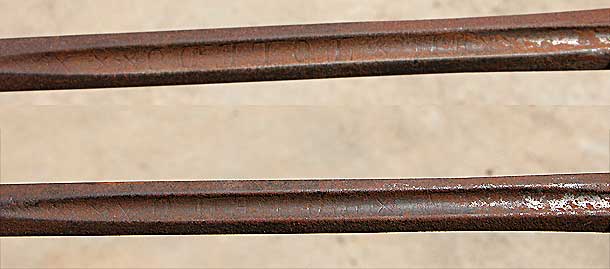
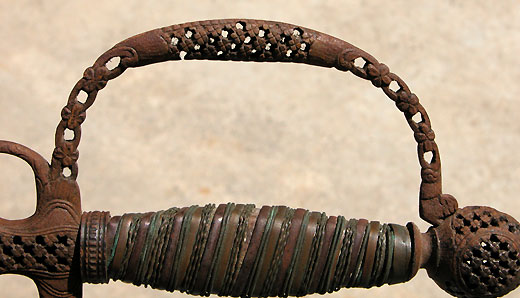



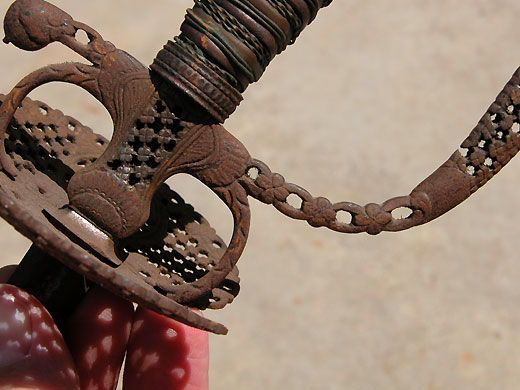
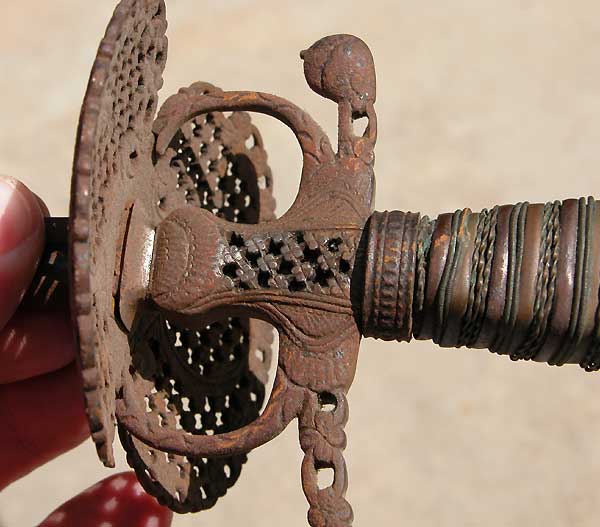
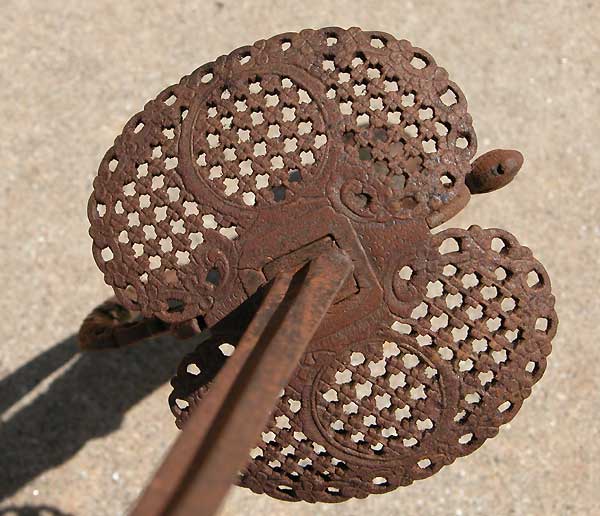
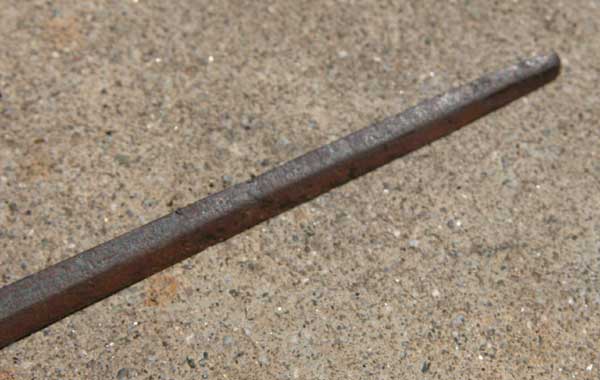
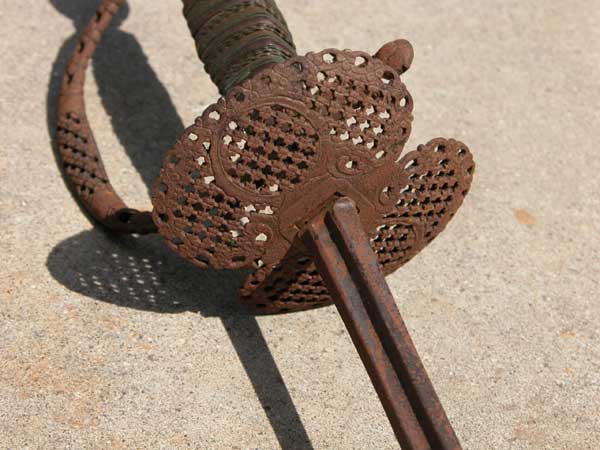
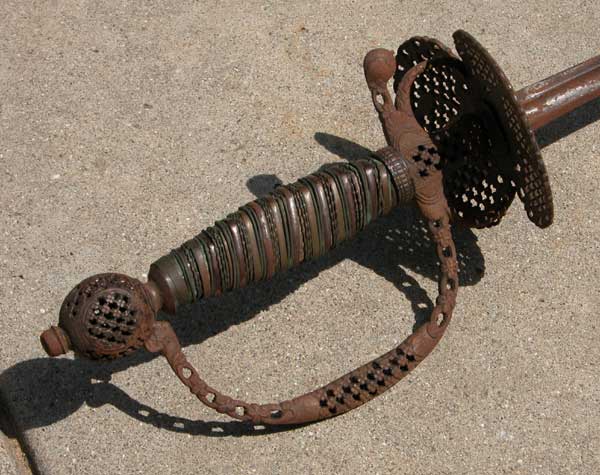
| Alex Oster wrote: |
| well its obviously a small sword, but more to who and when is going to be interesting as it gets cleadned up.
Cute though, plan on selling once done? |
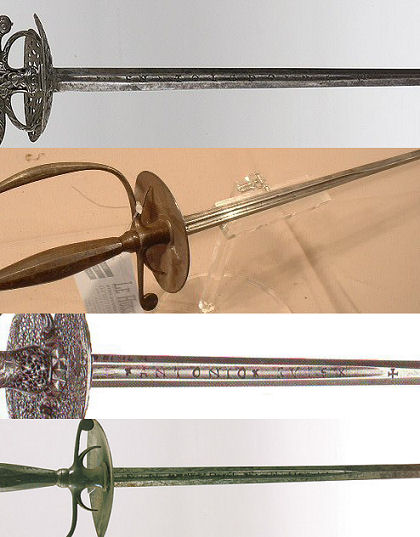
| Stephen A. Fisher wrote: |
| That must have been a beauty when it was new. There is a feature that helps identify your smallsword, the blade. It is 'clearly' visible that the blade is marked X TOLEDO XX in your second picture. In the 18th century, many Italian & Spainsh smallswords retained a blade similar to that found on cup-hilt rapiers (but shorter), the blade being thin in width, & thick, containing a short fuller which terminates, making the rest of the blade have a diamond cross section. These blades are often stamped with their country of origin, ex. "Toledo" or "Solingen." Judging by the pommel shape & general decoration of the hilt, I would place this smallsword somewhere in the second half of the 18th century. |